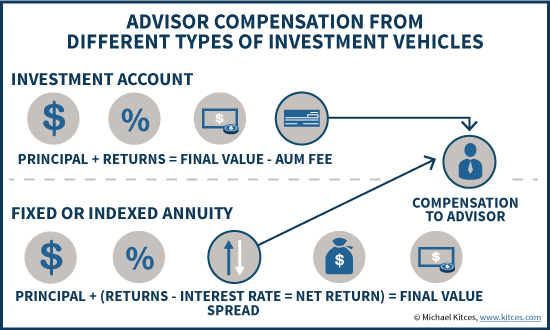Indexed Annuities Vs Mutual Funds
Post on: 12 Апрель, 2015 No Comment

In the world of investing annuities draw comparisons to just about all other types of investments, especially mutual funds. While variable annuities draw the closest comparisons to mutual funds, the new kid on the block, indexed annuities are often weighed as an alternative as well, due largely to the fact that their returns are generated from stock market returns. After that, the comparisons stop because they have little else in common.
The commonality shared by indexed annuities and mutual funds is that they are both seen as investment alternatives that have the potential to earn returns higher than those found in fixed yield investments. Beyond that, their structure, objectives, risk orientation, and their overall investor benefits couldn’t be more different. Let’s examine mutual funds first.
Mutual Fund Basics
Mutual funds are professionally managed portfolios that invest directly into stocks, bonds, or a combination of both. They usually live in families comprised of a variety of different funds with varying investment objectives. One mutual fund family might have several stock funds that invest in different categories of stocks, such as Blue Chip stocks, international stocks, precious metals stocks, etc. The same for bond funds which can include government bonds, or corporate bonds, foreign bonds, or a combination. Each fund is managed to specific investment objectives, and depending on the investment methodology and the composition of the portfolio, each is assigned a different level of risk.
For small investors, mutual funds provide the best opportunity to invest in the markets in a way that can minimize their risk while generating higher returns. Mutual funds investors benefit from instant diversification and professional management they couldn’t accomplish on their own. And, with the ability to invest in many different funds, it’s possible to develop an investment portfolio using an allocation strategy that best suits their individual investment objectives within their tolerance for risk.
During positive market performances, mutual funds have been able to deliver solid double digit returns, sometimes for years at a time. During negative market performances, they have also been known to deliver double digit losses. So, investors in mutual funds need to be able to tolerate the sometimes wide swings in the markets on their way to achieving their accumulation goals.
Indexed Annuity Basics
Indexed annuities were introduced as an alternative to fixed yield annuities, which, in low interest rate environments delivered low rates of return. They are also seen as an alternative to variable annuities, which, like their mutual fund cousins, generate their returns with direct investments in the markets. Indexed annuities have also seen their share of losses when the markets have declined. Indexed annuities are unique in that, while they do generate their returns from the stock market, they also protect the accounts from the losses.
A significant difference between indexed annuities and mutual funds is that, indexed annuities don’t invest directly into stocks. There is no managed portfolio. Rather, there is an accumulation account that is credited a fixed yield is based on the percentage change of a stock market index. The yield will vary from year to year as the stock index moves, but it will never fall below a minimum rate. So, even if the stock index ends the year with a percentage loss, the accumulation account will not decline in value.
The upside return is limited, however, in that the account is only credit with a portion of the index change through what is called a participation rate. If an indexed annuity has a 70% participation rate, then the account will be credited with 70% of the gain in the index. Additionally, most indexed annuities have a rate cap that further limits the amount credited to the account. A rate cap can be as high as 12% or as low as 5%. So, as an example, if the stock index ends the year with a gain of 20%, the rate credited to the account with a 70% participation rate would be 14%. If the annuity contract includes an 8% rate cap, then that is the maximum rate that would be credited.
Which is the Better Investment?
Because we’re comparing apples and oranges, it is difficult to assign a level of suitability without fully understanding a person’s individual financial profile. There are probably a lot of mutual fund investors who would love the notion of participating in the upside of the market without any downside risk. But then, would they be satisfied with earning only a portion of the stock market return?
Mutual fund investors enjoy favorable capital gains tax rates if they hold their fund shares for at least a year, but, typically, they pay taxes every year on income earned from their funds. Indexed annuity owners don’t pay any current taxes, but will pay ordinary income taxes when they withdraw their funds.
Any gains made in mutual fund accounts can be totally wiped out, and investors can lose ground in a steep market decline. The gains made in indexed annuities are, essentially, locked in every year so there is no chance for values to lose ground.
Summary
There really is no “better” between the two except for their ability to match an individual’s particular needs and tolerance for risk. For many investors, the ideal solution would be to include a mix of index annuities with a portfolio of mutual funds. Most everyone needs to be able to earn higher returns over the long term to meet their retirement goals. While a diversified portfolio of funds can achieve the growth needed, an indexed annuity can provide the stability and predictability that most people appreciate when the markets don’t perform well.














